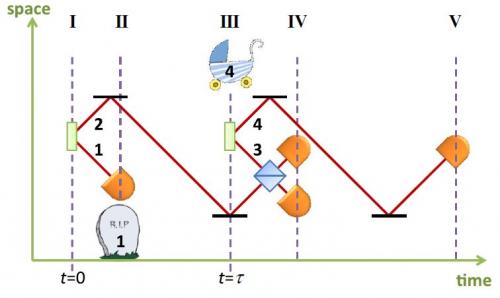|
Researchers in Israel have pulled a trick that makes quantum physics seem even stranger than an episode of Doctor Who – they've created a pair of photons that was briefly entangled not across space, but across time.
The last time El Reg discussed time-like entanglement it was being proposed as a theoretical construct. The idea put forward then was that by interacting with the quantum vacuum, two photons existing at different points in time could become entangled.
That, however, was just a proposal for one way that a time-like entanglement might exist. Now, in this paper at Arxiv (now published in Physical Review Letters), the University of Jerusalem researchers have demonstrated that it can be done.
The group, led by Hagai Eisenberg, took a different tack to last year's story, using only photon-to-photon entanglements to create a “spooky action at a distance” – between photons that never existed at the same time.
The process is pretty straightforward, as it turns out:
First, the researchers used a laser to create entanglement between two photons, P1 and P2, and measured the polarisation of P1 (destroying it);
Next, they create a second pair, P3 and P4;
P2 and P3 are entangled using a technique known as projective measurement: measuring the two simultaneously created their entanglement.
After this process, the researchers say, polarisation measurement on P4 showed entanglement with P1, even though P1 was destroyed before P4 was created.

“In the scenario we present here, measuring the last photon affects the physical description of the first photon in the past, before it has even been measured. Thus, the 'spooky action' is steering the system’s past. Another point of view that one can take is that the measurement of the first photon is immediately steering the future physical description of the last photon. In this case, the action is on the future of a part of the system that has not yet been created”, they write.
“This is a manifestation of the non-locality of quantum mechanics not only in space, but also in time. The inductive nature of the setup that was used suggests that it is possible in principle to use it to observe multiple stage entanglement swapping,” the researchers conclude. ®
|




